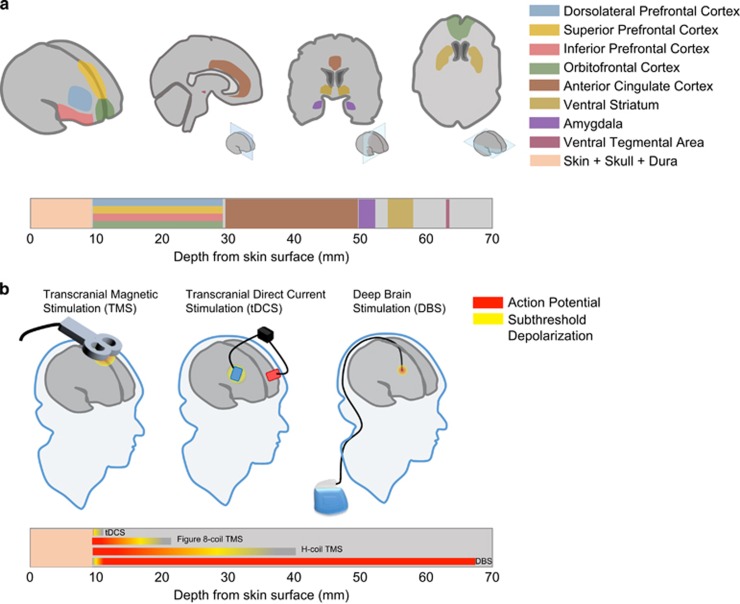Figure 1.
Overlap of brain regions to target in addiction with brain stimulation methods. (a) Human brain regions implicated in addiction. Top. Illustration of the major areas of the brain implicated in addiction based on imaging studies. Perspectives are from (left to right) cortical surface, sagittal, coronal, and horizontal perspectives (inset shows approximate view) Bottom. Approximate distances of implicated brain regions from skin surface above frontal and parietal bones. (b) Methods of brain stimulation. Top. Illustrations depicting methods of brain stimulation used in human from left: repetitive transcranial magnetic stimulation (rTMS), transcranial direct current stimulation (tDCS), and deep brain stimulation (DBS) with theoretical range of depolarization and action potential level of stimulation from current delivered. Bottom: Theoretical range of direct stimulation shown in distance from skin surface above frontal and parietal bones. Both tDCS and rTMS can stimulate cortical regions, while can DBS reach deeper subcortical structures.

